10 Roof Safety Tips
Posted by Howie Scarboro - CEO Fall Protection Distributors, LLC on Aug 8th 2023
Steep roof safety is of utmost importance to all roofers, especially when working on a steep roof. Working on a steep roof can be dangerous and even life-threatening if the correct safety precautions are not taken. In this blog post, we will discuss 10 must-know safety precautions for anyone working on a steep roof. By following these safety tips, roofers can ensure that they are doing their job safely and efficiently while minimizing the risk of injury or accidents.
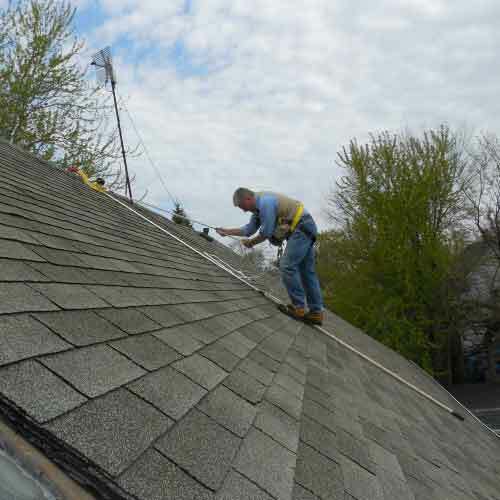
1) Assessing the Risks: Understanding the Hazards of Working on a Steep Roof
Working on a steep roof can be a challenging task, especially for those who are new to roofing projects or are working on a particularly steep slope. While some may think that working on flat roofs is more dangerous due to the lack of traction, it is important to note that steep roofs pose their own set of risks.
One of the main risks of working on a steep roof is the possibility of falling. To avoid this, it is important to take safety measures, such as wearing appropriate safety equipment like a safety harness or using roof jacks or roof brackets to secure yourself to the roof. These measures can help keep you from sliding or falling off the roof.
Another risk associated with steep roofs is the potential for injury due to unstable equipment, particularly if you are using a wooden ladder that may not be suitable for steeper roofs. In such cases, it is recommended to use a sturdy, stable ladder that is specifically designed for working on steeper roofs.
It is also important to remember that steep roofs can be more difficult to navigate, particularly when carrying equipment or materials up and down the roof. In order to work safely on a steep roof, it is important to plan out your movements ahead of time and to be aware of your surroundings.
Overall, assessing the risks associated with working on a steep roof is essential for staying safe on the job. By taking appropriate safety precautions and being prepared for potential hazards, you can work confidently and efficiently on even the steepest of roofs.
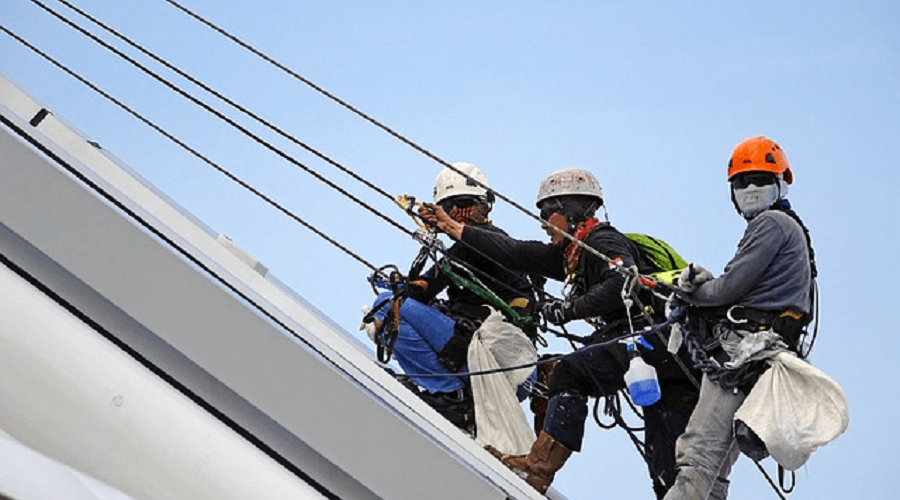
2) Wear Appropriate Safety Gear: Tips for Choosing and Wearing Personal Protective Equipment
When it comes to working on a particularly steep roof, personal protective equipment is crucial to protecting yourself and avoiding potential accidents. Here are some tips for choosing and wearing the right gear for your roofing job:
1. Roof Harness: Invest in a good quality roof harness that fits you well and is rated for the pitch of your roof. Make sure the harness has a D-ring that can be attached to a roof anchor or other fall protection system.
2. Roof Anchor: A roof anchor is an essential component of your fall protection system. Properly installing it accoring to the manufacturer's guidelines is essential to your safety.
3. Hard Hat: A hard hat can protect your head from falling objects or other hazards on the job site.
4. Footwear: Wear slip-resistant boots or shoes with good traction to help maintain your footing on a slippery roof.
5. Gloves: Good-quality gloves can protect your hands from cuts, scrapes, and other injuries while you work.
6. Eye Protection: Wear safety glasses or goggles to protect your eyes from debris or other hazards on the job site.
By wearing appropriate safety gear, you can significantly reduce the risk of injury when working on a pitched roof. Always prioritize your safety, and invest in the right equipment for the job.
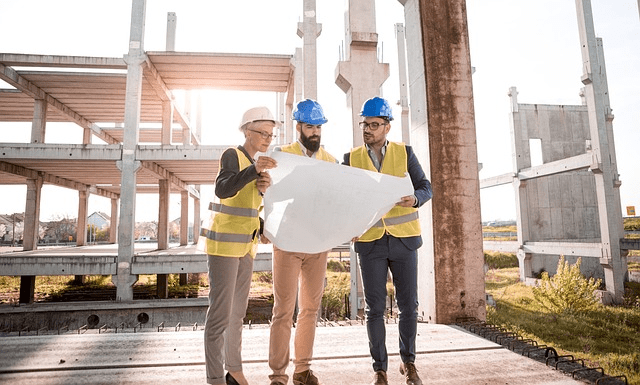
3) Choose the Right Tools and Equipment: How to Select and Use the Best Ladders, Scaffolding, and Fall Protection Systems
When working on a steep roof, choosing the right tools and equipment can make all the difference in working safely and efficiently. Ladders and scaffolding are essential tools for accessing and moving around the roof, while fall protection systems provide a critical safety net for preventing falls and injuries. Here are some tips for selecting and using the best tools and equipment for working on a steep roof safely:
1. Choose a ladder or scaffold that is appropriate for the roof's angle and height.
2. Ensure the ladder or scaffold is stable and securely positioned before use.
3. Use fall protection systems, such as safety harnesses or guardrails, to prevent falls from the roof's edge. High quality harnesses, lifelines, and anchors provide the necessary equipment for various situations requiring fall protection systems.
4. Inspect fall protection equipment before each use and replace any damaged components.
5. Make sure any equipment used is properly maintained and regularly checked for safety.
6. Use appropriate footwear, such as shoes with non-slip soles, for added traction when working on a roofing job.
- Develop an OSHA complaint safety plan, including a rescue plan, for each job and review it with all workers.
- Encourage the use of trauma strap on each worker's harness. In the event of a fall, a conscience worker can use trauma straps to relieve the pressure placed on the femoral arteries from the leg straps. This simple device can prevent suspension trauma injuries and deaths.
By using the right tools and equipment, you can work safely on a roofing project and prevent accidents and injuries. Always prioritize roof safety over productivity and consult with a professional if you're unsure about how to use a particular piece of equipment.
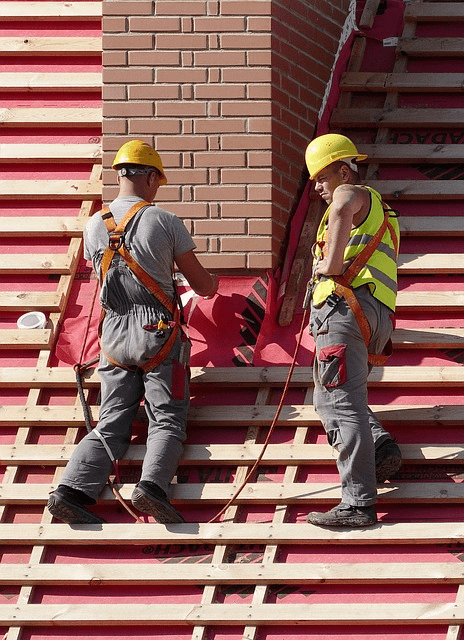
4) Set Up a Safe Work Zone: Strategies for Establishing a Secure Area Around the Work Site
When working on a steep roof, one of the key safety considerations is creating a secure work zone. This involves establishing a perimeter around the work site that prevents unauthorized access, and ensuring that all equipment and materials are securely stored and won't fall or roll off the roof.
Here are some strategies for setting up a safe work zone:
- Use barriers and warning signs: Place barriers, such as cones or caution tape, around the perimeter of the work site to prevent people from wandering too close. Use warning signs to alert people to the potential hazards of the work area.
- Secure equipment and materials: Make sure all tools and roofing materials are properly secured and won't fall or roll off the roof. Use bungee cords, tie-downs, a ladder hook, or other appropriate fasteners to keep everything in place.When possible, use scaffolding or other platforms to provide a stable surface for work. These structures can also provide a safety barrier around the work site.
- Have a plan for waste removal: Plan for removing waste and debris from the roof to save time. Use a chute or other appropriate method to ensure that debris doesn't accumulate and becomes a hazard.
By taking these steps, you can create a secure work zone that helps prevent accidents and keeps everyone safe on any pitched roof.
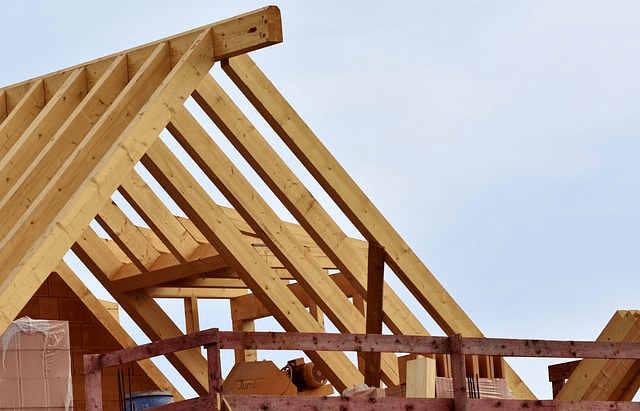
5) Mind Your Footing: Tips for Maintaining Traction on Slippery Roofs
One of the biggest challenges when working on a steep roof is maintaining traction and preventing slips and falls. Even the slightest loss of footing can lead to serious injuries, which is why it's important to take the necessary precautions to ensure your safety.
Firstly, it's crucial to wear proper footwear. Your shoes should have a good grip, be slip-resistant, and have sturdy soles to help you maintain balance on the steep surface. Avoid shoes with smooth soles or those that are worn out as they can make it difficult to get a grip.
Secondly, use caution when walking onto the roof. Try to avoid walking on areas of the roof where there is moss, water damage, or debris as these can increase the risk of slipping. Instead, opt to work on a clean and dry surface as much as possible. Even the slightest amount of moisture, debris, or sawdust can cause a deadly slip.
Thirdly, it's important to slow down and take small steps when walking on the roof. This allows you to maintain a better balance and control over your movements.
Finally, consider using safety equipment such as harnesses and ropes to keep yourself secure and prevent falls. These are essential safety measures when working on a steep roof and can give you peace of mind while carrying out your tasks.
By following these tips, you can reduce the risk of slipping and ensure that you safely work on a steep roof. Remember that safety should always be your top priority, so take all the necessary precautions before you begin work.
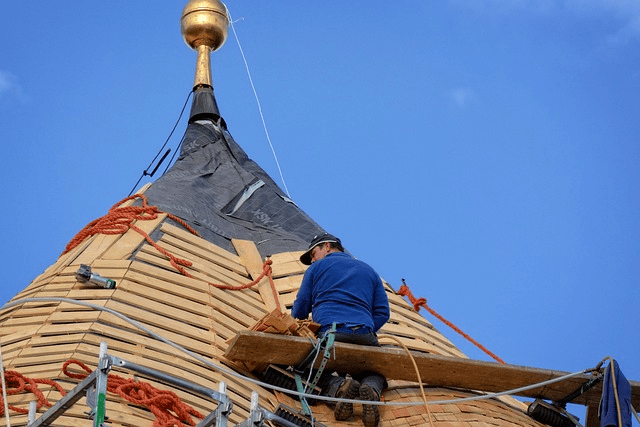
6) Don't Work Alone: Why Having a Partner Can Help Keep You Safe and Productive
Working on a steep roof can be a daunting and dangerous task, even for the most experienced and skilled professionals. That's why it's always best to have a partner to work with, who can provide valuable assistance and support. Here are some reasons you shouldn't work alone when working on a steep roof:
1. Safety: Having a partner means that there is someone else to help you in case of an accident or emergency. They can support you in getting down from the roof, provide first aid, or call for help if necessary. A partner can also spot potential hazards and help you avoid them.
2. Productivity: Having a partner can increase your productivity and efficiency. They can assist you in carrying heavy equipment, holding the ladder steady, or handing you tools when you need them. This way, you don't have to keep going up and down the ladder, wasting valuable time and energy.
3. Moral support: Working on a steep roof can be mentally and physically challenging. Having a partner to talk to, joke with, or even just keep an eye on you can provide much-needed moral support and make the task more manageable.
4. Sharing knowledge and experience: A partner can also be a valuable source of knowledge and experience. They may have encountered similar situations or have different perspectives on how to approach a task. By working together, you can learn from each other and improve your skills.
Overall, having a partner when working on a steep roof is essential for safety, productivity, and morale. Make sure to choose someone who is reliable, skilled, and trustworthy, and communicate clearly about your tasks, roles, and responsibilities. With the right partner by your side, you can complete your roofing project safely and successfully.
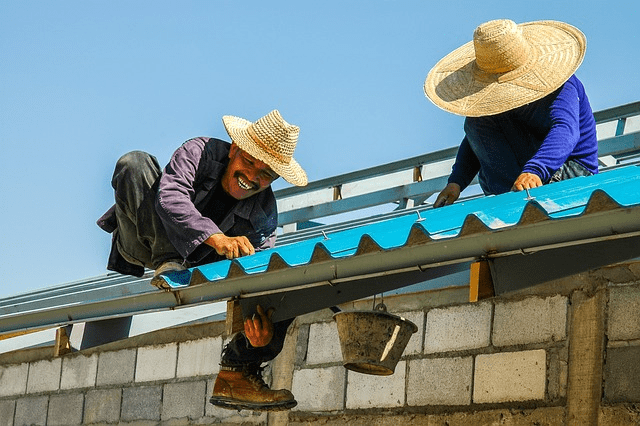
7) Plan Your Work Carefully: The Importance of Mapping Out Your Tasks and Sticking to Your Plan
Working on a steep roof can be a challenging task that requires a high level of preparation and attention to detail. One of the key aspects of ensuring safety when working on a steep roof is planning your work carefully. Mapping out your tasks and sticking to your plan can help you minimize the risks of accidents and improve your overall productivity.
When planning your work on a steep roof, start by breaking down your tasks into smaller, more manageable parts. Consider factors such as the slope of the roof, the height of the building, the type of roofing material, and the weather conditions. Consider any obstacles or hazards that could impact your work and adjust your plan accordingly.
Make sure you have all the tools and equipment you need before you begin your work. Prepare a checklist of everything you will need, and ensure that everything is in good working order. Make sure that all equipment is properly secured and tethered to prevent accidental drops or falls.
Sticking to your plan is just as important as making it in the first place. Once you have your plan in place, make sure to follow it strictly. Avoid taking shortcuts or rushing through tasks, and always focus on maintaining good footing and balance. If you encounter unexpected obstacles or challenges, reassess your plan and adjust as needed.
By planning your work carefully and following your plan, you can minimize risks and stay safe while working on a steep roof. Remember, your safety should always be your top priority.
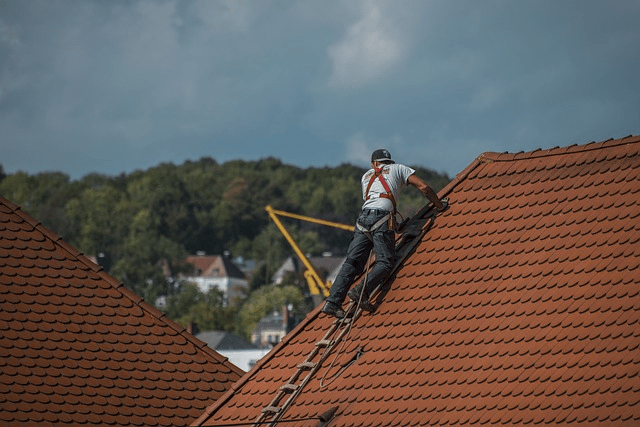
8) Take Breaks and Stay Hydrated: How to Avoid Heat Stress and Exhaustion
Working on a steep roof can be physically demanding, and it's essential to take care of yourself to avoid heat stress and exhaustion. Here are some tips to keep in mind:
1. Stay Hydrated: Drink plenty of water and electrolyte-rich fluids to prevent dehydration. Avoid alcohol and caffeine, as they can dehydrate you.
2. Take Breaks: Take frequent breaks to rest and rehydrate. Use a shaded area or create one with a canopy to shield yourself from the sun's heat.
3. Monitor Your Body: Watch for symptoms of heat stress, such as dizziness, headaches, cramps, and fatigue. Take action if you experience any of these symptoms.
4. Wear Light Clothing: Wear lightweight and light-colored clothing to help regulate your body temperature and stay cool.
5. Use Cooling Tools: Use fans or misting systems to keep the air around you cool and moist.
By following these tips, you can work safely and efficiently on a steep roof without compromising your health. Don't forget to communicate with your partner and let them know when you need a break or feel unwell. Taking care of yourself is crucial for preventing accidents and ensuring a successful workday.
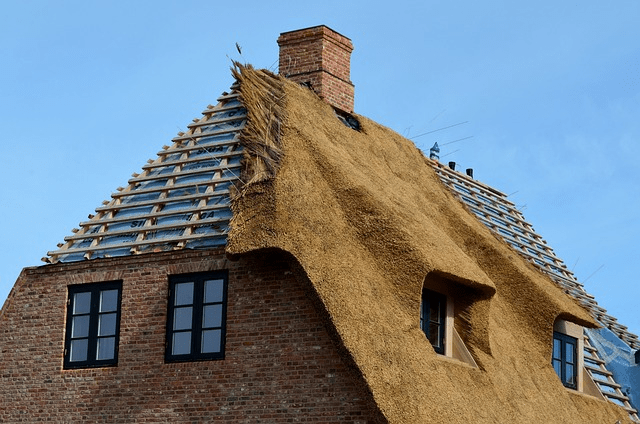
9) Stay Alert and Be Prepared: What to Do in Case of an Emergency or Accident
No matter how cautious you are, accidents can still happen when working on a steep roof. That's why it's essential to be alert and prepared in case of an emergency. Here are some tips on how to stay safe and handle emergencies while working on a steep roof.
Firstly, always have a first aid kit on site. It should contain essential items like bandages, antiseptic wipes, and gloves. Additionally, know the location of the nearest hospital or urgent care facility, and have their contact information readily available.
In case of a fall, make sure that someone knows where you are and has your cell phone number. If you are working alone, invest in a personal fall arrest system that will keep you suspended and prevent further injury.
If someone falls or suffers a serious injury, immediately call 911 or any other emergency service. Before the arrival of emergency responders, provide basic first aid to the victim and keep them as comfortable as possible.
Finally, it is vital to debrief after the accident or emergency and review the situation with your team or partner. This will help you identify what went wrong and take corrective measures to prevent similar incidents in the future.
By following these tips, you can stay alert and be prepared in case of an emergency or accident while working on a steep roof. Remember that your safety and well-being should always be your top priority.
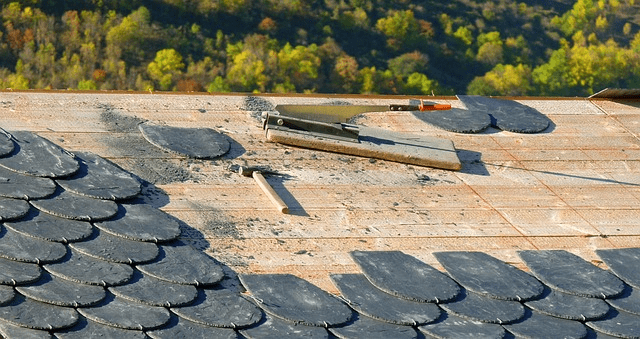 }
}
10) Wrap-Up and Review: Recap of Key Points and Best Practices for Safe Roof Work.
Working on a steep roof can be a challenging and hazardous task, but with the right precautions and best practices in place, it is possible to do so safely and efficiently. In this post, we have covered ten key safety measures to keep in mind when working on a steep roof.
First, it is important to assess the risks and understand the hazards associated with this type of work. Additionally, choosing and wearing appropriate personal protective equipment, such as helmets and harnesses, can help reduce the risk of injury.
Selecting the right tools and equipment, establishing a safe work zone, and maintaining traction on slippery surfaces are all important steps to ensure safety on the job. Having a partner, planning out your work, working carefully, taking breaks, and staying hydrated are also critical to maintaining your health and well-being.
Finally, it is important to stay alert, be prepared for emergencies, and follow all safety guidelines to ensure a safe and productive work environment. By following these tips and best practices, you can help minimize the risks associated with working on a steep roof and stay safe on the job with equipment from Fall Protection Distributors.

